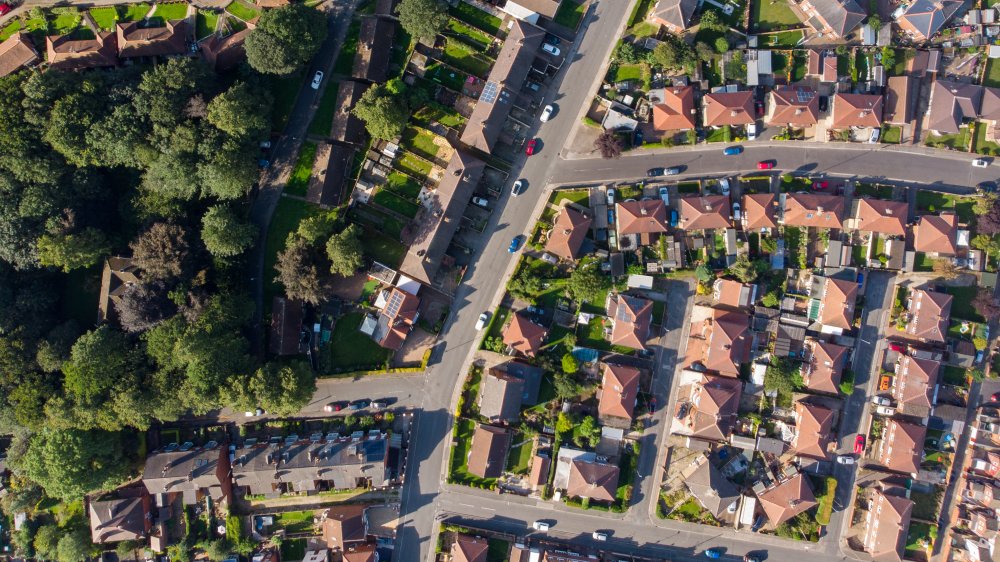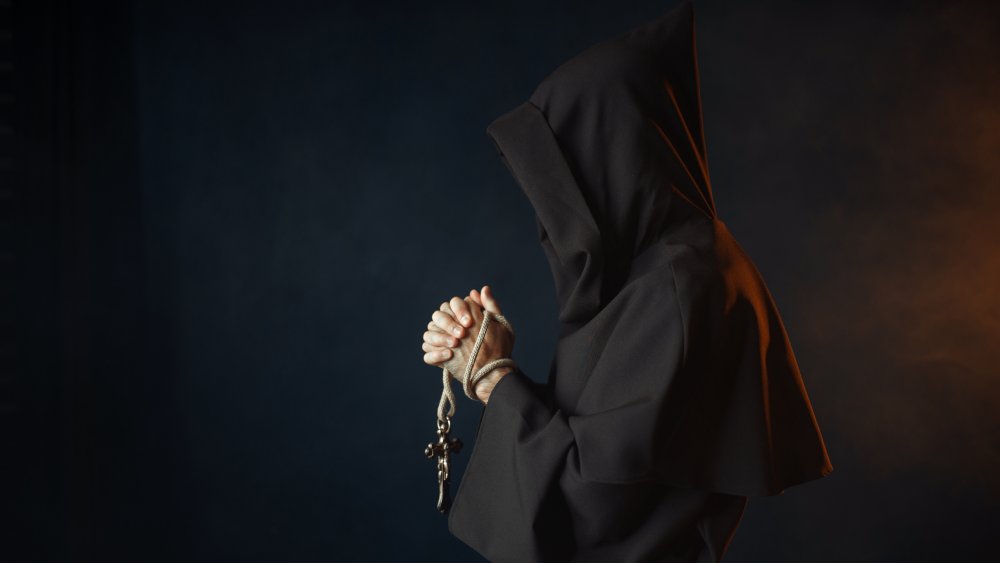The Creepy History Of England's Black Monk House
When Joe and Jean Pritchard moved into their recently bought 30 East Drive in Pontefract with their two children, 13-year-old Diane and 15-year-old Philip, and Jean's mum Sarah in August 1966, they seemed to have lucked out on a picturesque house in West Yorkshire. Shortly after their move though, as Alan Murdie wrote in his feature piece "When the Lights Went Out", Philip and his grandmother felt "cold gusts of wind blowing through the house and shaking doors and windows despite its being warm and sunny outside." Additionally, white powder began dropping in the living room, puddles began forming on the kitchen floor, and green foam emerged from the taps. Then, one night, as Sarah was popping her head in to say goodnight to Philip, she saw the wardrobe shaking.
As neither the police nor the water board could understand the phenomena, they called in the local ghost hunter who opined that this was the work of a poltergeist. However, the poltergeist suddenly ceased its activities.
Two uneventful years passed. Then Diane started hearing banging noises on a nightly basis. These experiences increased in intensity, including throwing her off her bed and one night trying to pull her up the stairs by her hair. The family also began seeing what appeared to be a figure dressed in a black habit with its cowl down. Eventually, these occurrences drove the Pritchards out a few years later but, as The Line Up notes, no subsequent resident ever reported anything resembling the supernatural.
Identifying the Black Monk
Quickly enough, news of the poltergeist leaked to the press. With that came a drive to theorize what might have given rise to the Black Monk. As the investigators delved further, however, possibilities proliferated. Some, as mentioned in The Line Up's piece, point to the idea that Richard II was killed in Pontefract Castle, which stood quite close to the modern day 30 East Drive. Others point to the land across the street, an old gallows site, or the priory which used to occupy the land. These led to the theory proposed by paranormal investigator Tom Cuniff, that, as Ghostwatch.net outlines, during the reign of Henry VIII, a monk was hanged for raping a young girl, hence the poltergeist's attraction to Diane. However, as "When the Lights Went Out" points out, extensive study of historical records fails to find any monk executed for rape at the priory.
Colin Wilson's theory in Poltergeist!, a reported book on the Black Monk poltergeist, is that poltergeists inhabit unhappy households and the tension between Mr. Pritchard and Philip as well as the religious history around the house's location, made 30 East Drive susceptible to the poltergeist.
Ghost hunters still flock to the Black Monk House, trying to catch a sighting. One of the most recent, which was reported in The Mirror, is a photo in which a robed arm holding a rosary poking out from around the corner. Perhaps they found something. But we're no closer to any real understanding.

